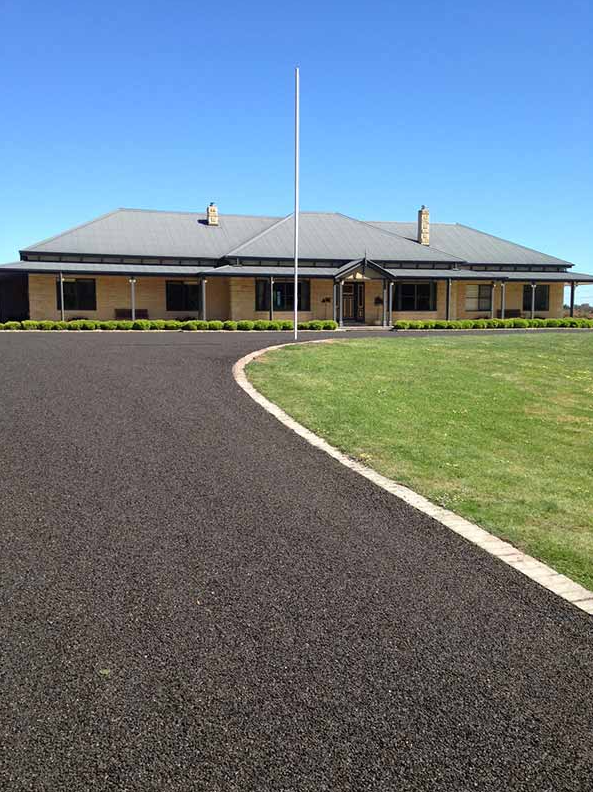Industrial hardstands are the backbone of operational efficiency in heavy-duty environments—providing critical support for vehicle access, equipment storage, loading zones, and machinery operation. These surfaces need to do far more than simply look good; they must deliver strength, stability, and durability under constant, heavy use. At Redland Bay Surfacing Solutions, we specialise in constructing industrial-grade hardstands tailored to the unique requirements of businesses in Redland Bay, QLD.
This guide explains what makes a hardstand suitable for industrial use and why proper design and construction matter for long-term performance.
What Is an Industrial Hardstand?
A hardstand is a solid, load-bearing surface built for industrial or commercial activity. Unlike residential driveways or car parks, industrial hardstands are engineered to support heavy vehicles, frequent traffic, and long-term static loads without shifting, rutting, or breaking down.
They are commonly found in:
- Warehouses and logistics hubs
- Manufacturing sites
- Mining and agricultural operations
- Transport depots and yards
- Construction zones and plant storage areas
Key Elements of a High-Performance Industrial Hardstand
1. Engineered Base Preparation
The base is the most critical part of any industrial hardstand. Without a properly compacted and stabilised foundation, even the thickest surface layer will fail under pressure.
Requirements include:
- Soil testing to understand load capacity and ground behaviour
- Excavation to depth suitable for expected loading
- Installation of crushed rock, gravel or stabilised sand as a sub-base
- Mechanical compaction in multiple layers for even load distribution
2. Surface Material Selection
Industrial hardstands must be constructed with materials suited to the specific demands of the site.
Common surface types:
- Asphalt – flexible and smooth, suitable for high-traffic areas with occasional heavy loads
- Bitumen spray seal – cost-effective for low-traffic or storage zones
- Concrete – extremely durable for high-weight applications, but more costly
- Gravel hardstands – often used in temporary or rural operations, but require frequent maintenance
At Redland Bay Surfacing Solutions, we recommend the most appropriate material mix based on your operational needs and long-term budget.
3. Load-Bearing Capacity
A hardstand must be designed to handle the maximum expected load—both static and dynamic.
- Vehicles such as semi-trailers, forklifts, or cranes apply point loads that require higher-grade materials and deeper bases.
- Surfaces not built for these stresses will deform, crack, or sink over time, leading to safety and operational issues.
4. Drainage and Water Management
Water is a major contributor to hardstand failure.
- Industrial sites often have large roof catchments, vehicle wash-down areas, or machinery runoff.
- Hardstands must be graded to direct water away, and in many cases include underground drainage or surface channels.
- Poor drainage leads to soft spots, potholes, or surface erosion.
We ensure all hardstands in Redland Bay are designed with effective water management to protect both the surface and surrounding structures.
5. Access and Functionality
A well-designed industrial hardstand must integrate with the site layout and operational flow.
Considerations include:
- Turning radius and lane width for large vehicles
- Entry and exit points for safe access
- Integration with roller doors, loading docks, and pathways
- Surface marking, bollards, or barriers as needed for safety
At Redland Bay Surfacing Solutions, we work closely with our clients to ensure the hardstand layout supports both safety and efficiency.
6. Compliance and Longevity
Industrial hardstands may need to meet council, WHS, or environmental standards. Proper planning and execution ensure long-term compliance and reduce the risk of fines or costly remediation.
In addition, ongoing maintenance planning—including resealing, crack filling, and inspections—helps extend the life of the surface.
Why Choose Redland Bay Surfacing Solutions?
We provide customised hardstand construction and surfacing services throughout Redland Bay, QLD. Our team has extensive experience building robust surfaces for industrial clients who rely on their infrastructure every day.
We offer:
- Site-specific engineering and construction
- Asphalt, bitumen, and gravel surfacing options
- Efficient project delivery with minimal disruption
- Long-term maintenance and surface management plans
Our hardstands are built for performance—designed to carry heavy loads, manage water, and operate reliably in even the most demanding conditions.
Conclusion
An industrial hardstand is much more than a paved area—it’s a foundation for daily operations. For a hardstand to be suitable for industrial use, it must be engineered with the right base, surface materials, drainage, and load-bearing capacity. When designed and constructed properly, it will withstand years of high use while keeping your operations running safely and efficiently.
If you’re planning a hardstand project in Redland Bay, QLD, contact Redland Bay Surfacing Solutions. Our team will assess your site, recommend the right construction approach, and deliver a surface that meets your operational and structural requirements.
Call us on: 07 3113 9392
Click here to find out more about Redland Bay Surfacing Solutions
Click here to complete our contact form and see how we can help with your driveway needs.

